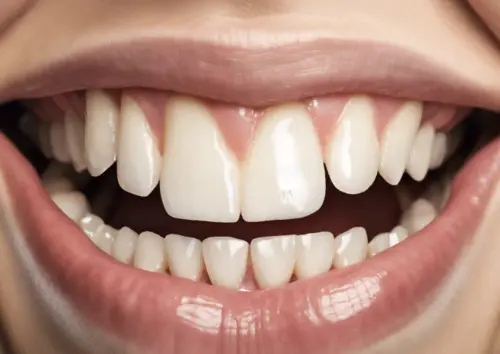When it comes to improving your smile, there are several options to consider, including bonding and crowns. Each of these dental procedures offers unique benefits and considerations.
We will explore the differences between bonding and crowns, helping you make an informed decision about which option is best for you. So, whether you’re looking to enhance the appearance of your teeth or restore damaged ones, keep reading to discover the best treatment for your dental needs.
Bonding vs. crowns
Bonding and crowns are all dental procedures that can enhance the appearance of teeth, but they have some key differences:
Bonding: Dental bonding involves applying a tooth-colored resin material to the teeth and shaping it to improve their appearance. It is a more conservative and affordable option. Bonding is ideal for individuals with minor cosmetic concerns, such as small gaps or chips in teeth. It requires minimal tooth preparation and can usually be completed in a single visit.
Crowns: Dental crowns, also known as caps, are used to cover and protect damaged or severely decayed teeth. They are typically made of porcelain or metal and require significant tooth reduction before being placed. Crowns offer both cosmetic and functional benefits, as they can improve the appearance and strength of teeth. They are the most suitable option for individuals with extensive tooth damage or large fillings.
Here’s a quick summary of the key differences between bonding and crowns:
| Treatment | Description |
|---|---|
| Bonding | Application of tooth-colored resin material to improve the appearance of teeth. |
| Crowns | Caps that cover and protect damaged or decayed teeth, providing both cosmetic and functional benefits. |
Each treatment has its own pros and cons, and the choice depends on the individual’s specific needs and goals. It’s essential to consult with a dentist to determine the most suitable option for your situation.
When should you consider bonding?
Bonding is a cosmetic dental procedure that involves applying a tooth-colored composite resin material onto the tooth’s surface to improve its appearance. Bonding is an ideal option for individuals who have minor dental imperfections such as small chips or cracks, discoloration, or gaps between their teeth.
It can also be used to reshape teeth or make them appear longer. Bonding is a relatively quick and affordable procedure compared to crowns, making it a popular choice for individuals who want to enhance their smile without extensive dental work.
However, it is important to note that bonding is not as durable or long-lasting as crowns and may require touch-ups or replacements over time.
When should you consider crowns?
When should you consider crowns? Crowns, also known as dental caps, are suitable for individuals with more extensive tooth damage or those who have undergone a root canal treatment. Here are some situations where crowns may be recommended:
- Extensive tooth decay: If a tooth has significant decay that cannot be restored with a filling, a crown may be required to protect and strengthen the remaining tooth structure.
- Cracked or fractured tooth: A crown can provide support and stability for a tooth that has a large crack or fracture, preventing further damage or tooth loss.
- After root canal treatment: Following a root canal procedure, the affected tooth may become weak and brittle. A crown can help restore strength and protect the tooth from further damage.
- Misshapen or discolored teeth: Crowns can be used to improve the appearance of misshapen or severely discolored teeth, enhancing the overall smile aesthetics.
- Dental bridge placement: When replacing missing teeth with a dental bridge, crowns are used to anchor the bridge securely to the neighboring natural teeth.
It is best to consult with a dental professional to determine whether a crown is suitable for your specific oral health needs. They can assess your situation and recommend the most appropriate treatment option.
Pros and cons of bonding, and crowns
Bonding:
Pros:
- Cost-effective compared to crowns.
- Quick and easy process, usually completed in a single visit.
- Can improve the appearance of chipped, cracked, or discolored teeth.
- Requires minimal enamel removal.
Cons:
- Less durable than crowns, may require more frequent repair or replacement.
- Susceptible to staining and discoloration over time.
- Not suitable for major changes in tooth shape or size.
- May not have the same natural-looking appearance as crowns.
Crowns:
Pros:
- Provides superior protection and strength for severely damaged or decayed teeth.
- Can improve the appearance of misshapen or severely discolored teeth.
- Long-lasting and highly durable.
- Can be color-matched to blend seamlessly with natural teeth.
Cons:
- Requires significant enamel removal.
- Higher cost compared to bonding.
- Requires multiple visits and involves more complex procedures.
- May cause temporary sensitivity or discomfort after placement.
It’s essential to consult with a dentist to determine which option is best suited for your specific dental needs and goals.
Cost comparison of bonding and crowns
When considering bonding, and crowns, it’s essential to understand the cost differences associated with each dental treatment. The cost of these procedures can vary depending on several factors, including the complexity of the case, the materials used, and the location of the dental practice.
Bonding: Bonding is a more affordable option. The cost per tooth typically ranges from $300 to $600. Bonding uses a composite resin material to reshape or repair teeth, which is relatively less expensive.
Crowns: Crowns can be more expensive than bonding but are often less expensive. The cost per tooth can vary from $800 to $1,500 or more. Factors such as the type of material used (porcelain, ceramic, metal, or a combination) and the need for additional treatments, like root canals, can influence the overall cost.
These are general price ranges, and the actual cost can vary depending on individual cases and the specific dental practice. Consulting with a dentist will help determine the most appropriate treatment option based on your needs and budget.
Conclusion and recommendations
The choice between bonding, and crowns depends on several factors such as the extent of tooth damage, desired aesthetic outcome, budget, and long-term dental health goals. Here are some recommendations based on different scenarios:
- If you have minor cosmetic issues such as discoloration, small chips, or gaps between teeth, bonding is a cost-effective and non-invasive option. It can provide immediate results and requires minimal tooth preparation.
- Crowns are recommended for cases where there is significant tooth decay, structural damage, or weakened teeth. Crowns provide maximum protection and strength but involve more extensive tooth reshaping and are the most expensive option.
It is essential to consult with a qualified dentist to assess your individual dental needs and goals before making a decision. They can provide personalized recommendations and help you weigh the pros and cons of each treatment option.






